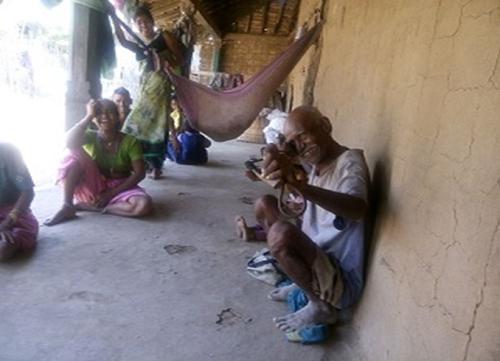Nikunj Jambu
The project intends to establish a baseline of current avifaunal diversity, create awareness among the local community, especially children, about the importance of avifauna in providing ecosystem services and consequently create a sense of stewardship to aid in their conservation. It also aims to explore alternative livelihood options for the local populace.

Forest staff during clearing and marking of transect points.
Purna Wildlife Sanctuary (PWS) lies at the border of Gujarat, on the northernmost portion of Biome-10 The Western Ghats. PWS harbors more than 150 species of birds, many of which are endemic to the Western Ghats. In PWS, hunting has been an integral part of the cultural milieu. However, for the past four to five decades it has been known that a reduction in the ungulate population has caused a shift in the hunting practices of the local community, primarily toward avifauna of passerines and galliformes (Trivedi 2006).

Local flaunting his catapult which he has used to hunt birds all his life. © Vandana vishwanath
The project aims for avifaunal conservation of PWS using three tools, viz: research, awareness and generating alternative livelihood options. Initially, a questionnaire survey will be carried out which will give insight on the socioeconomic status, people's perception on avifauna and ascertain extent of hunting in the area. A baseline data of current avifaunal diversity will be estimated using proper scientific methods.
Field experience and interaction with locals reveal that this hunting is carried out mostly by school kids or teenagers, and the practice is handed down by grandparents to children. The awareness programs, therefore, will have targeted audience which includes children, teachers and parents. Nature education workshops and nature trails will be organized for targeted audience in an attempt to transform their perspective towards avifauna.
Finally, to accommodate changing lifestyle choices, livelihood alternatives such as tourism through guided tours and home-stays will be explored, which will inculcate a sense of ownership in the tribes for their biodiversity. To achieve this, PWS will be promoted as a Bird sanctuary, and locals with good local bird knowledge will be trained to be Bird guides. Additionally, concept of home-stay will be explored to provide alternative livelihood to the local populace. A website will be built to popularize the area and bridge the gap between homestay owners and visitors. Also, website will be used to promote traditional art of the locals.